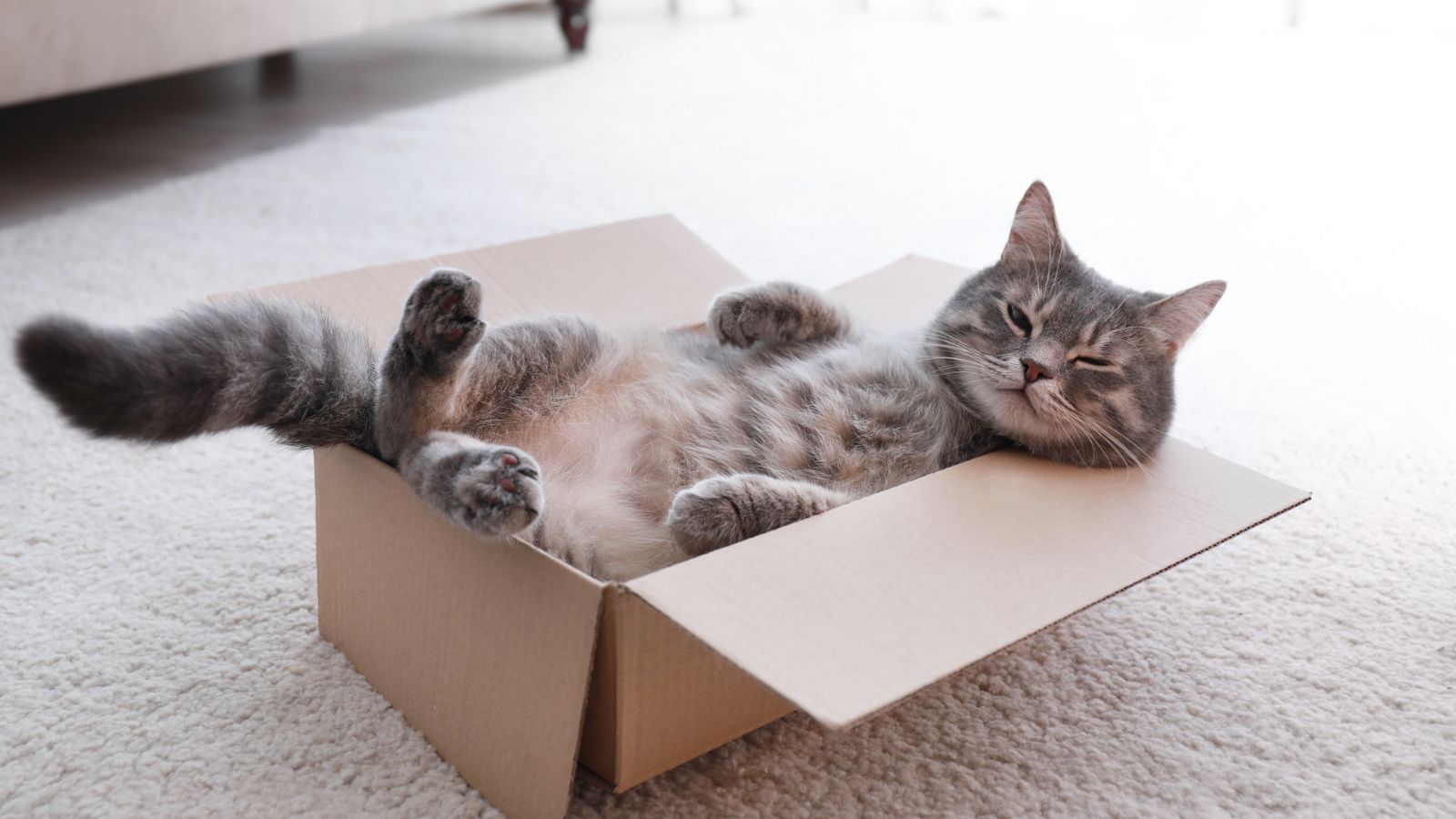Cats and boxes share a special bond that has long puzzled pet owners. You’ve likely witnessed your feline friend eagerly leaping into an empty cardboard container, seemingly entranced by its simple charm. Cats love boxes because they provide a sense of security and comfort, tapping into their natural instincts for enclosed spaces.

This behavior stems from cats’ evolutionary past as both predators and prey. In the wild, small, enclosed areas offer protection from larger threats while allowing cats to observe their surroundings undetected. Your household kitty may not face the same dangers, but those instincts remain strong.
Boxes also serve as cozy retreats for cats. The snug fit mimics the warmth and safety they experienced as kittens huddled with their littermates. You might notice your cat appears more relaxed when nestled in a box, as it helps reduce stress and provides a sense of control over their environment.
The Comfort of Confined Spaces
Cats are drawn to boxes and other enclosed spaces due to their instinctual need for security and physical comfort. These snug areas provide cats with a sense of safety and help regulate their body temperature.
Safety and Security in Enclosed Spaces
Boxes offer cats a protected vantage point to observe their surroundings. You might notice your feline friend peering out from a cardboard fortress, feeling safe from potential threats. This behavior stems from their wild ancestors’ need to find secure spots for rest and protection.
Enclosed spaces also provide stress relief for cats. When feeling overwhelmed, they can retreat to these cozy hideouts. This allows them to calm down and feel more in control of their environment.
Temperature Regulation and Comfort
Cats have a higher body temperature than humans, and enclosed spaces help them maintain it efficiently. You’ll often find your cat curled up in a box, conserving heat and energy.
In warmer conditions, these spaces can offer a cooler retreat. The insulating properties of cardboard or other materials help create a more comfortable microclimate for your cat.
Boxes and similar confined areas also provide physical support. Your cat can press against the walls, giving them a sense of security and comfort. This tactile sensation is particularly soothing for many felines.
Instinctual Behaviors and Environmental Interactions
Cats’ fascination with boxes stems from deeply rooted instincts and their interactions with their surroundings. These behaviors are closely tied to their natural predatory nature and territorial instincts.
Hunting Instincts and Predatory Behavior
Cats are ambush predators by nature. A box provides the perfect vantage point for stalking and pouncing on unsuspecting prey. When your cat crouches inside a box, it’s mimicking the behavior of hiding in tall grass or behind rocks in the wild.
This instinct is so strong that even domesticated cats will engage in play-hunting behaviors. You might notice your cat’s pupils dilate and its tail twitch as it prepares to “attack” a toy or even your feet as you walk by. The confined space of a box enhances this predatory feeling, making it an irresistible spot for your feline friend.
Scent Marking and Sense of Ownership
Cats have a strong desire to mark their territory, and boxes provide an excellent canvas for this behavior. By rubbing against the cardboard, your cat leaves its scent behind, effectively claiming the box as its own.
This scent marking serves multiple purposes:
- It creates a familiar, comforting environment
- It establishes boundaries for other animals
- It reinforces your cat’s sense of security
You might observe your cat repeatedly entering and exiting a new box, rubbing its face and body along the edges. This behavior is your cat’s way of saying, “This is mine!” The more a box smells like your cat, the more appealing it becomes as a safe haven.
Psychological Factors and Well-being
Cats’ love for boxes goes beyond mere physical comfort. Their attraction stems from deep-rooted psychological needs and instincts that contribute to their overall well-being.
Curiosity and Mental Stimulation
Boxes provide cats with an exciting playground for exploration. You might notice your feline friend investigating every nook and cranny of a new cardboard container. This behavior satisfies their innate curiosity and offers mental stimulation.
Cats use boxes as a form of entertainment, combating boredom in indoor environments. You’ll often see them pouncing in and out, batting at the edges, or simply sitting inside while observing their surroundings. This engagement helps keep their minds active and alert.
Some cat owners create DIY puzzle boxes, cutting holes or adding toys to further enhance the mental stimulation. These modifications can turn a simple box into an engaging cognitive exercise for your cat.
Stress Reduction and Safe Havens
Boxes serve as personal retreats for cats, offering a sense of security and comfort. You may notice your cat seeking out a box when feeling overwhelmed or anxious. This behavior is rooted in their instinct to find safe, enclosed spaces.
In multi-cat households, boxes can help reduce stress by providing individual territories. You might observe cats using boxes as a way to establish boundaries and avoid conflicts with other pets.
The confined space of a box can also have a calming effect on cats. You may find your cat more relaxed after spending time in their cardboard sanctuary. This stress reduction contributes to better overall health and well-being for your feline companion.
